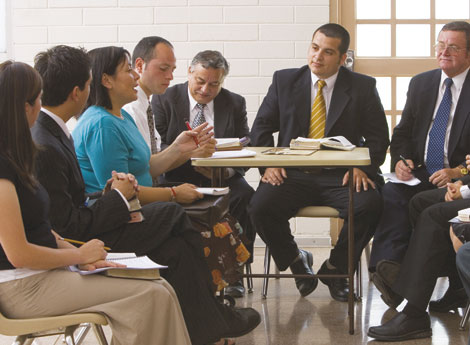When I was fifteen, the bishop of our ward was called into the stake presidency sparking instant speculation on who would be the next bishop. When asked to come up with my speculation, it occurred to me that the process was relatively simple. I made a mental list of the 50 or so active men in our ward. I subtracted everyone who had been in the bishopric, high council, or stake presidency already (9). I subtracted all the men who had been divorced (5). I subtracted the men who were probably going to be divorced (6). I subtracted the man who openly claimed he should be the prophet. I subtracted the men without children (4). I subtracted my father because he didn’t serve a mission. I subtracted all the men of color (2). I subtracted the unemployed men (3). I subtracted all the men who rented or whose houses were on the wrong side of the tracks (16). BINGO. I had my short list of 3 candidates for bishop. Two of the men I picked were called into the bishopric. (I hadn’t realized the other man had found a job.)
A decade later, I was newly married in a very different ward with very different demographics. There were very few active, successful, married men. The bishop was moving out of the ward. Everyone wondered, “But who is there to call?” During one of these discussions, I naively suggested that they call one of the older single men. There were many who were in their 30s or 40s and who were responsible, established in their careers and true disciples of Christ. My fellow church-goers looked at me as if I had just stripped naked, throwing purple confetti, started clog dancing while singing “The Good Ship Lollipop.” Of course not! A single, childless man could never be a good bishop! Some people might defend this selection process because only the best can be bishop. But the truth is that this extends to other callings.
In my single days, I heard a ward leader complain that they couldn’t staff the ward. I immediately brought up that none of the sisters I visit-taught had callings and felt excluded. I suggested that he try asking them. His response was, “But no, there really isn’t anyone.” The sisters I visit taught were active in the church, worthy recommend holders, successful professionally, talented, and well-versed in gospel topics. They all were desperate to serve. One was a woman of color, one was socially awkward, and one had a noticeable disability. Like me so many years ago, this leader could take a ward list of over a hundred people and pare it down to nearly nobody.
I joined Ordain Women because a Christ-centered church should not be paring their long, long membership lists down to “nobody to serve.” If only the leadership would see women and their potential, those short lists would double. But what if leadership also saw disabled persons, people of color, all socioeconomic backgrounds, all marital statuses, all gender identities, all sexual orientations, different families built different ways, and any others who we cross off our lists? Instead of fretting and worrying that there is no one to serve, we would discover God’s army.
One of the missions of the church is to “perfect the saints.” Perfecting the saints can be accomplished by reasonable behavioral improvements. But it can also be accomplished if we have that mighty change in our hearts which transforms how we view all of God’s children. If we looked through Christ’s eyes we might see capability, wholeness, talents, and faith. If we looked through Christ’s eyes we would see the perfection in others even before they made any improvements. If we looked through Christ’s eyes, we might not cross so many off our lists.







